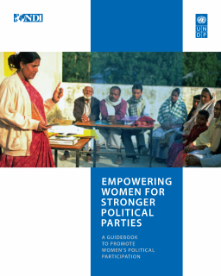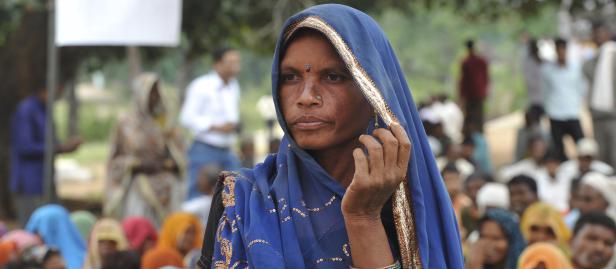Empowering Women for Stronger Political Parties
Empowering Women for Stronger Political Parties
October 25, 2012
This publication identifies targeted interventions for promoting the stronger presence and influence of women in political parties as well as advancing gender equality issues in party policies and platforms. The lessons learned and common strategies in this Guide are drawn mainly, but not exclusively, from 20 case studies that were commissioned by UNDP and conducted by NDI during 2009-2010. The entry points identified are designed to provide ideas for action for political parties, development assistance providers, party foundations, and CSOs in their work to support parties. This full length version, including 20 case studies, is available in English. The "Good Practices Guide" (abridged version) is available in English, French, Russian and Arabic.
Key suggestions to political parties for including more women in the political process:
- Adopting a statement on gender equality in the party’s founding documents;
- Internal quotas for women’s participation and candidature;
- Setting targets for female participation in party conventions. Can include separate forums for women;
- Establishing women’s wings and sections within parties;
- Ensuring that gender is included in all of the party’s policies;
- Ensuring women are allocated safe seats;
- Working with civil society organizations to oversee the implementation of quotas;
- Expanding and training the pool of women candidates;
- Sharing experiences with other parties across countries and regions;
- Providing training to women candidates in such skills as fundraising, message development, media relations and communicating with voters;
- Training and promoting women in campaign leadership positions (e.g. in campaign management);
- Ensuring women’s visibility in the campaign by providing additional media exposure;
- Identifying and disseminating party positions that are priorities for women, which could also attract more women’s votes for their party;
- Monitoring elections, including by recruiting women as party agents to be present at polling stations, particularly if those polling stations are allocated for women only; and
- Providing information to voters that include specific messages highlighting the importance of women’s votes and women’s right to vote as equal members of society.

 Locations
Locations


